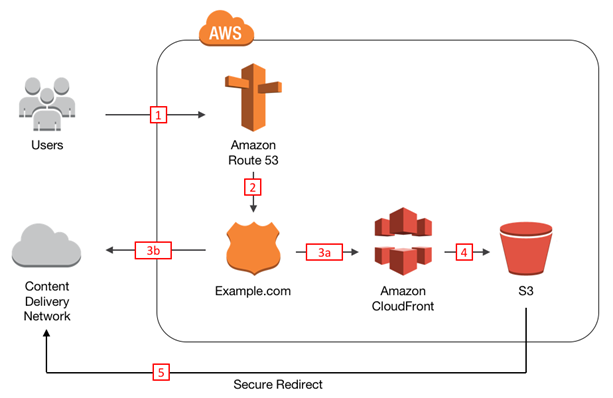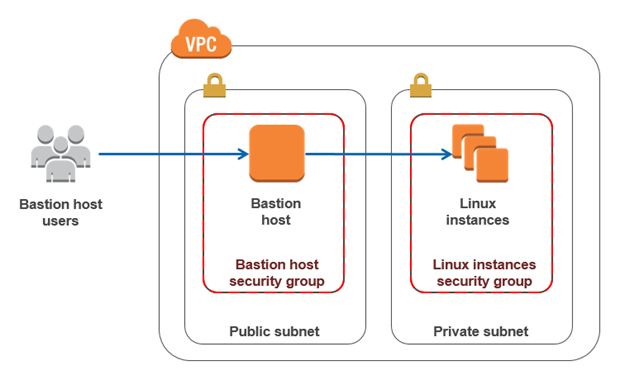AWS Security Blog
Category: Networking & Content Delivery
How to Automatically Revert and Receive Notifications About Changes to Your Amazon VPC Security Groups
In a previous AWS Security Blog post, Jeff Levine showed how you can monitor changes to your Amazon EC2 security groups. The methods he describes in that post are examples of detective controls, which can help you determine when changes are made to security controls on your AWS resources. In this post, I take that […]
AWS Earns Department of Defense Impact Level 5 Provisional Authorization
The Defense Information Systems Agency (DISA) has granted the AWS GovCloud (US) Region an Impact Level 5 (IL5) Department of Defense (DoD) Cloud Computing Security Requirements Guide (CC SRG) Provisional Authorization (PA) for six core services. This means that AWS’s DoD customers and partners can now deploy workloads for Controlled Unclassified Information (CUI) exceeding IL4 […]
How to Configure an LDAPS Endpoint for Simple AD
September 9, 2020: There’s an updated version of this blog here – https://aws.amazon.com/blogs/security/how-to-configure-ldaps-endpoint-for-simple-ad/. Simple AD, which is powered by Samba 4, supports basic Active Directory (AD) authentication features such as users, groups, and https://aws.amazon.com/blogs/security/how-to-configure-ldaps-endpoint-for-simple-ad/the ability to join domains. Simple AD also includes an integrated Lightweight Directory Access Protocol (LDAP) server. LDAP is a standard application […]
The AWS EU (London) Region Achieves Public Services Network (PSN) Assurance
AWS is excited to announce that the AWS EU (London) Region has achieved Public Services Network (PSN) assurance. This means that the EU (London) Region can now be connected to the PSN (or PSN customers) by PSN-certified AWS Direct Connect partners. PSN assurance demonstrates to our UK Public Sector customers that the EU (London) Region […]
How to Help Protect Dynamic Web Applications Against DDoS Attacks by Using Amazon CloudFront and Amazon Route 53
Using a content delivery network (CDN) such as Amazon CloudFront to cache and serve static text and images or downloadable objects such as media files and documents is a common strategy to improve webpage load times, reduce network bandwidth costs, lessen the load on web servers, and mitigate distributed denial of service (DDoS) attacks. AWS […]
How to Protect Your Web Application Against DDoS Attacks by Using Amazon Route 53 and an External Content Delivery Network
Distributed Denial of Service (DDoS) attacks are attempts by a malicious actor to flood a network, system, or application with more traffic, connections, or requests than it is able to handle. To protect your web application against DDoS attacks, you can use AWS Shield, a DDoS protection service that AWS provides automatically to all AWS […]
Updated Whitepaper Available: AWS Best Practices for DDoS Resiliency
AWS is committed to providing you high availability, security, and resiliency in the face of bad actors on the Internet. As part of this commitment, AWS provides tools, best practices, and AWS services that you can use to build distributed denial of services (DDoS)–resilient applications. We recently released the 2016 version of the AWS Best […]
How to Record SSH Sessions Established Through a Bastion Host
A bastion host is a server whose purpose is to provide access to a private network from an external network, such as the Internet. Because of its exposure to potential attack, a bastion host must minimize the chances of penetration. For example, you can use a bastion host to mitigate the risk of allowing SSH […]
How to Set Up DNS Resolution Between On-Premises Networks and AWS by Using Unbound
In previous AWS Security Blog posts, Drew Dennis covered two options for establishing DNS connectivity between your on-premises networks and your Amazon Virtual Private Cloud (Amazon VPC) environments. His first post explained how to use Simple AD to forward DNS requests originating from on-premises networks to an Amazon Route 53 private hosted zone. His second […]
How to Optimize and Visualize Your Security Groups
September 9, 2021: Amazon Elasticsearch Service has been renamed to Amazon OpenSearch Service. See details. May 3, 2017: We published a related blog post also written by Guy Denney, How to Visualize and Refine Your Network’s Security by Adding Security Group IDs to Your VPC Flow Logs. Many organizations start their journey with AWS by experimenting […]









